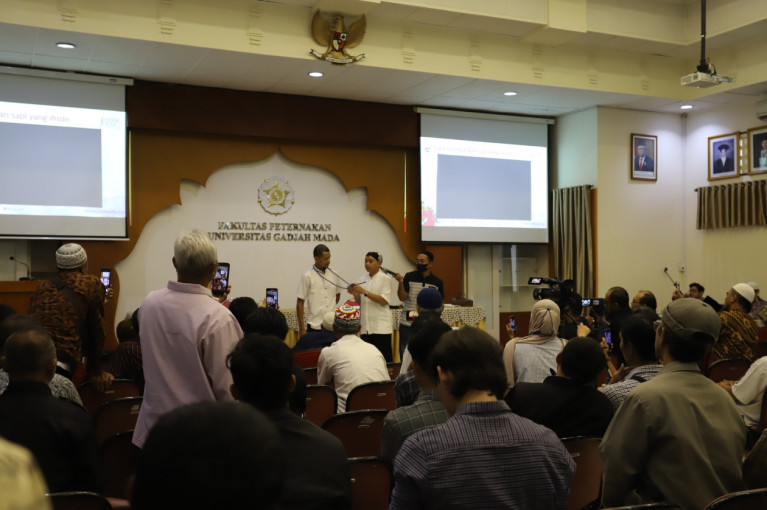
UGM Faculty of Animal Science lecturer Dr. Nanung Danar Dono said that when selecting sacrificial animals, choosing healthy animals with solid posture, no signs of weakness, normal appetite, no infectious or contagious diseases, and no visible physical defects is essential.
According to him, tips for selecting sacrificial animals include observing whether the hooves look healthy and intact and whether the movement when walking is normal and not limping.
“If the animal is sick, it can be identified by loss of appetite, reluctance to walk, and weakness,” Nanung said during the Training for Sacrificial Animal Slaughter at the Soepardjo Auditorium, Faculty of Animal Science, on Tuesday (13/6).
When purchasing sacrificial animals, Nanung advised avoiding animals raised in garbage disposal areas as they are likely to consume heavy metal waste.
Furthermore, fasting the animals for 12 hours is recommended one day before the slaughter to prevent them from becoming aggressive, making the handling process much more manageable.
“Fasting also reduces the contents of the rumen (stomach) and enhances the conversion of muscle fibers and blood vessels into meat,” he emphasized.
However, equally important, he added, is preparing all the necessary slaughter equipment, such as providing sharp knives, and ensuring the readiness of slaughter facilities.
The butcher should carry out the slaughter correctly by cutting three channels in the front part of the neck, below the jaw, including the respiratory or tracheal channel, the esophagus or food channel, and the carotid artery and jugular vein.
“After that, hang the slaughtered animal by its hind legs. During the cutting, refrain from cutting the meat while smoking, as the meat is susceptible to odors, including the unpleasant smell of cigarette smoke,” Dr. Dono explained.
He also advised not to wash the innards in rivers as urban rivers are generally contaminated with chemicals, hospital waste, and disease-causing microorganisms such as Escherichia coli and bacteria that cause dysentery.
“Also, try not to place the meat on the ground surface, as bacteria can multiply at a rate of 10,000 to 100,000 bacteria per minute,” he revealed.
For distribution, efforts should be made to separate the meat from the innards and distribute the meat using woven bamboo bags.
“If not available, it is better to use transparent plastic bags,” he said.
Another lecturer from the Faculty of Animal Science, Dr. Cuk Tri Noviandi, said that mosque administrators and sacrificial committees should have sufficient preparation time for the slaughter. He advised the selection of butchers or slaughterers for sacrificial animals must be selective, preferably choosing relatively young and experienced ones.
“They should know how to handle the sacrificial animals properly, and if possible, they should not be too old,” he said.
According to him, there have been cases where the hind legs of cattle kicked butchers, causing the butchers to fall. Some cows even broke free from their restraints due to stress.
“If a cow kicks a butcher, we must understand the cow’s condition first. The concern is not that the cow is aggressive, but that it is afraid of crowded situations,” he explained.
Author: Gusti Grehenson

